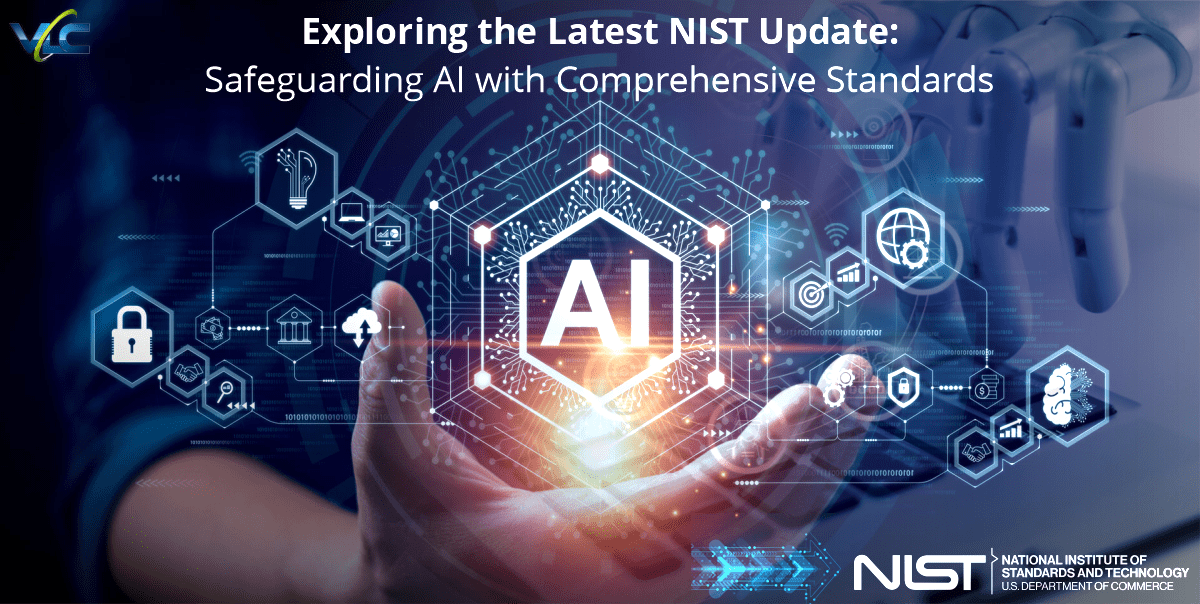Exploring the Latest NIST Update: Safeguarding AI with Comprehensive Standards
NIST’s Commitment to AI Governance
The National Institute of Standards and Technology (NIST) has taken on the task of creating comprehensive regulations and frameworks for the reliable application of artificial intelligence (AI). NIST has recently announced the release of four draft publications that cover important aspects of AI governance and are in line with the Executive Order on Safe, Secure, and Trustworthy Artificial Intelligence.
Understanding Risks: The Generative AI Profile
The Artificial Intelligence Risk Management Framework, NIST AI 600-1: Understanding the particular hazards connected to generative AI technologies is possible with the help of the Generative Artificial Intelligence Profile. Enterprises can locate and mitigate potential vulnerabilities in an organized manner by concentrating on 13 key hazards that are made worse by generative AI. This profile provides stakeholders with the necessary expertise to manage the ever-changing world of artificial intelligence dangers, ranging from data privacy concerns to the growth of synthetic content.
Securing Development: Recommendations for AI Systems
The NIST Special Publication (SP) 800-218A, Secure Software Development Practices for Generative AI and Dual-Use Foundation Models, goes hand in hand with the risk management framework. Personalized security guidelines for AI systems are offered in this article at every stage of the software development lifecycle. In order to strengthen the integrity of AI systems and reduce potential vulnerabilities, this document supports best practices by addressing security considerations unique to AI model providers, system producers, and acquirers.
Detecting Synthetic Content: The Synthetic Content Profile
In today’s digital environment, the emergence of synthetic content—including deepfakes and AI-generated media—poses serious problems. Methods for identifying, validating, and labeling synthetic content are described in NIST AI 100-4 – Reducing Risks Posed by Synthetic Content. Through the utilization of techniques like digital watermarking and metadata recording, entities can reinforce their barriers against the propagation of deceptive or detrimental information. Furthermore, the text emphasizes the moral obligation of preventing unlawful activities—like the distribution of non-consensual intimate imagery—by means of proactive governance practices.
Global Collaboration: A Plan for AI Standards
NIST AI 100-5 – A Plan for Global Engagement on AI Standards provides a path for worldwide cooperation in the establishment of AI standards in recognition of the global character of AI development and deployment. In order to promote a uniform approach to AI governance internationally, this document aims to gather input on important areas that require standardization. NIST emphasizes its commitment to forming an AI environment that prioritizes safety, security, and reliability on a global scale, stressing the significance of context-sensitive, performance-based standards that give priority to human-centric and societal factors.
Conclusion: Shaping a Responsible AI Ecosystem
The release of these draft materials by NIST represents a critical turning point in the continuous endeavor to develop a morally and responsibly responsible AI ecosystem. These frameworks and standards protect against potential hazards and pitfalls while laying the foundation for the ongoing progress of AI technologies by addressing emerging difficulties and requesting feedback from stakeholders. Stakeholders are helping to shape an AI ecosystem that puts safety, security, and reliability first by interacting with these materials and offering input.
